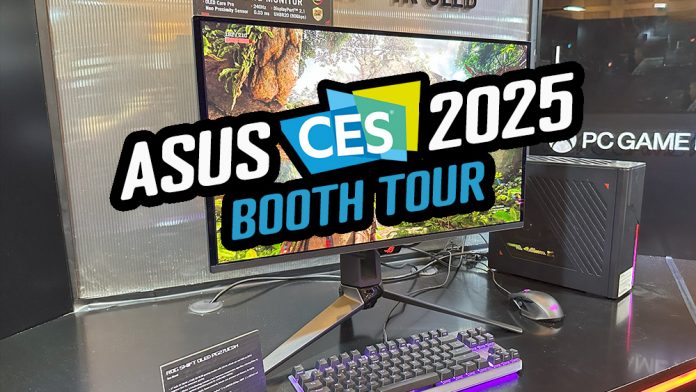Disclaimer: this article includes sponsored promotion, but all content, opinions and commentary are our own.
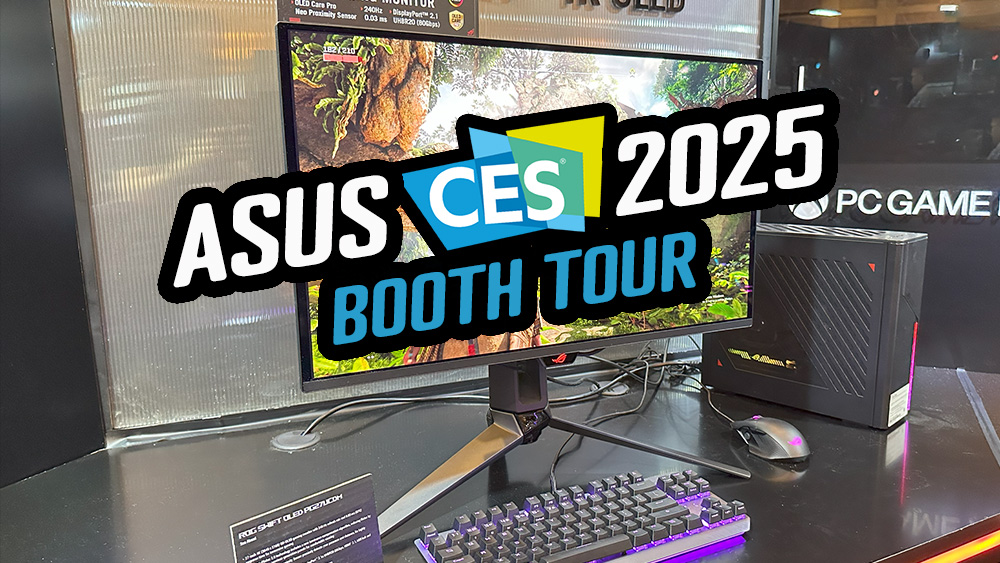
Introduction
This week we’ve been at CES 2025 in Las Vegas to bring you all the latest monitor news and information from the show. In this article we’ll take you through what Asus had at their booth including the latest OLED gaming displays, their new G-sync Pulsar monitor, a new dual-mode LCD, and their latest ProArt professional monitors too.
We also have coverage in the following video so if you want to see some footage of these screens and hear more about them that way, check it out here.
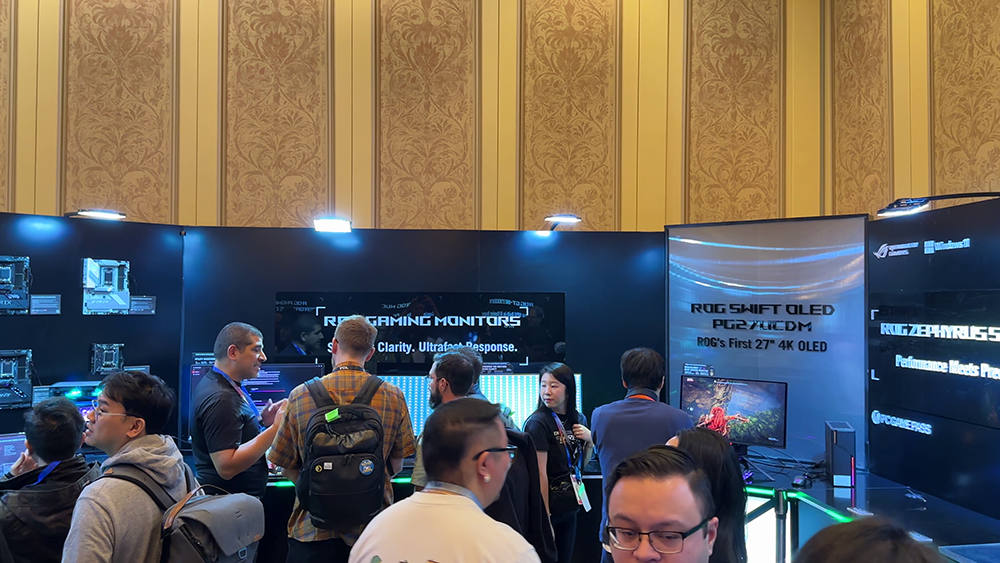
27″ OLED with 4K 240Hz for the first time!
Let’s talk about their new OLED monitors first as this is the most rapidly expanding monitor segment for sure. Headlining the OLED announcements was their new ROG Swift PG27UCDM, a 27” sized screen with a 4K resolution and a 240Hz refresh rate.
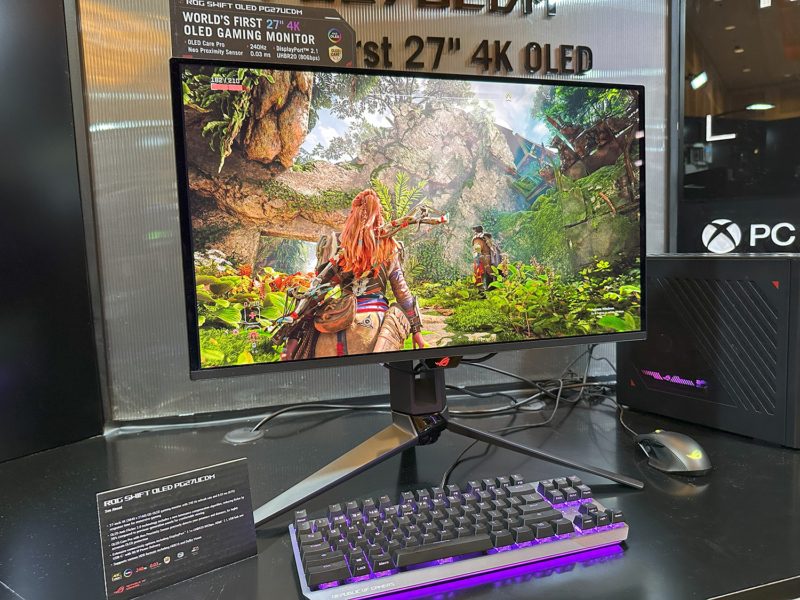
This is using a brand new 2025 QD-OLED panel from Samsung Display which offers the highest pixel density available from a modern consumer OLED monitor. With the 3840 x 2160 resolution packed in to a 26.5” screen size, it offers a pixel density of around 166 PPI, a significant step up from the 111 PPI offer from existing 1440p resolution models of the same size (like their PG27AQDM for instance). This gives you a much sharper and clearer picture with high levels of detail for office applications, productivity applications and of course gaming and video. It has an amazing picture quality in person, and this higher pixel density has basically eliminated any remaining visual issues with text clarity.
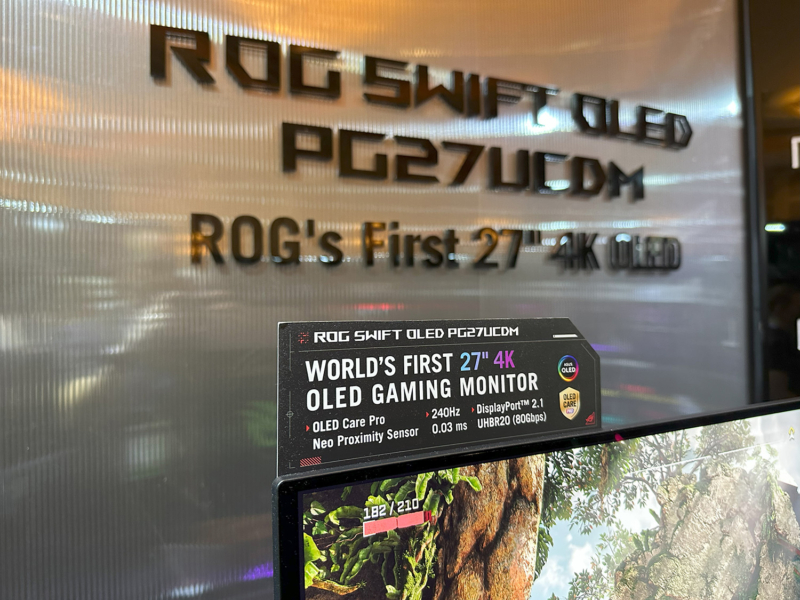
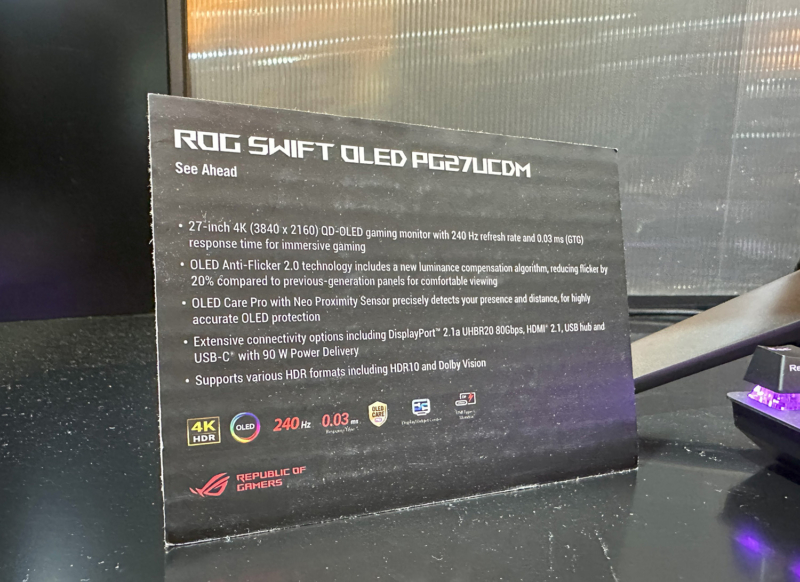
Also of particular note for this new screen is the inclusion of proper DisplayPort 2.1 connectivity, with top tier UHBR20 support and 80Gbps bandwidth. This means that you can use the screen with next gen graphics cards that support this connection with an uncompressed video signal. There’s no need for Display Stream Compression (DSC) to be used on this screen to run 4K at 240Hz if you have a compatible graphics card, or get one in the future. It’s really good to see this starting to appear more on top-end monitors now that graphics cards are starting to adopt this connection more.
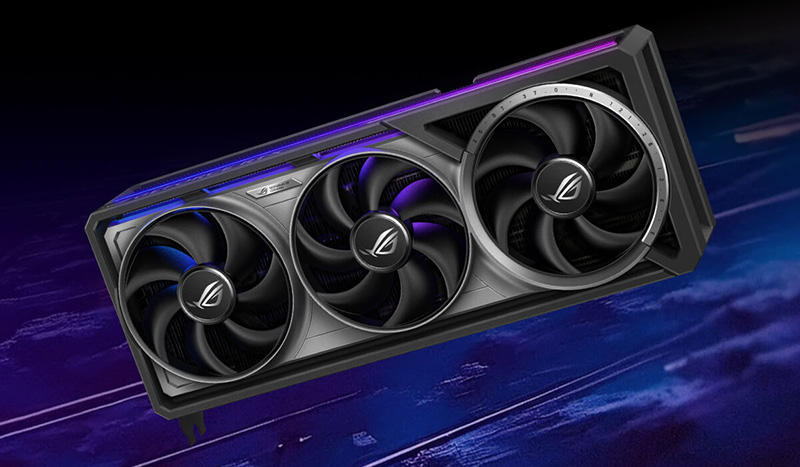

Asus announced their new NVIDIA RTX 50 series graphics cards at the event as well, including their top-tier ROG Astral GeForce RTX 5090. All the new 50 series cards feature DisplayPort 2.1 connectivity with UHBR20, 80Gbps speeds so can power this new 27” OLED screen nicely. We were at the Asus booth the day before NVIDIA’s keynote announcement and so didn’t get to see any of the new cards in person unfortunately, so you’ll have to make do with marketing images as above.
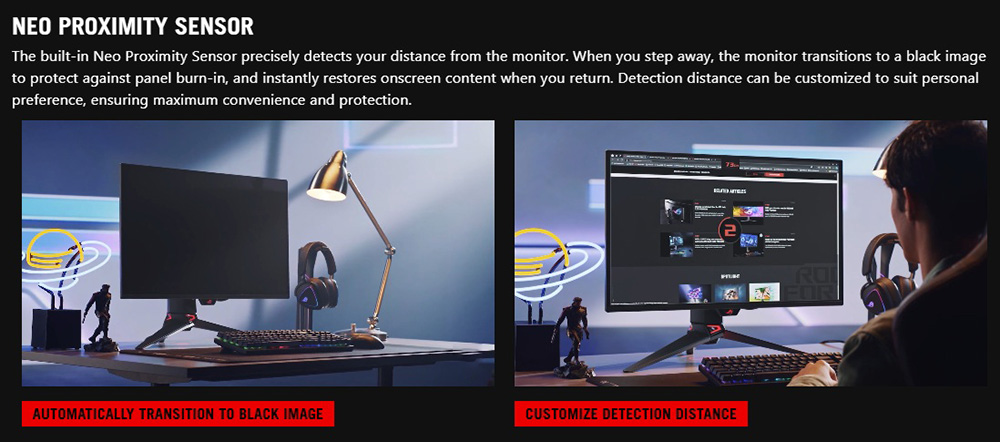
Asus were also demo-ing the Neo Proximity Sensor on this screen, a new addition to their OLED Care Pro feature set which detects human presence in front of the screen, and turns it off when you move away after a short period, before turning the screen back on when you return. You can even customise it to fit your individual viewing position via a useful sensor setting. That’s really handy for protecting your OLED monitor and reducing the risk of burn-in, and Asus told us they plan to add this to other future ROG OLED monitors.

The other new feature is their updated Anti-flicker 2.0 technology, designed to help reduce visible flicker in VRR situations that is a problem on all OLED panels. As well as 3 different settings to control your VRR range like featured on some of their previous OLED monitors, they’ve introduced an updated luminance compensation algorithm. Both these features can help reduce VRR flicker nicely. Asus told us that only new 2025 OLED monitors will have this new luminance compensation algorithm, it’s not possible to add it to any of their older OLED monitors which just have the previous Anti-flicker tech, as opposed to v2.0 like this screen has.
We’ve actually been using this screen over the last month or so and have already completed a full detailed review of this screen so you can check that out to find out loads more about this new model.
Pushing OLED refresh rates even higher, to 500Hz

Not actually on display at the media booth unfortunately but definitely worth a mention is their forthcoming ROG Strix XG27AQDPG which was quietly announced in a press release, but without much fanfare. This new screen is 27” in size and will offer a 1440p resolution QD-OLED panel with a whopping 500Hz refresh rate.
This is again part of Samsung Display’s 2025 QD-OLED panel line-up, and will be the highest refresh rate available from any OLED monitor for now offering exceptional motion clarity and gaming performance. That’s a big step up from the 360Hz QD-OLED panels from last year, so you’ve now got an option here for a super-high refresh rate, with the semi-glossy screen coating and QD-OLED panel colours.
We don’t have a lot of information about this model yet other than it will also include their OLED Care Pro features and Anti-Flicker 2.0 modes and should be released in early Q2 we are told.
G-sync Pulsar Monitor Almost Ready for Release
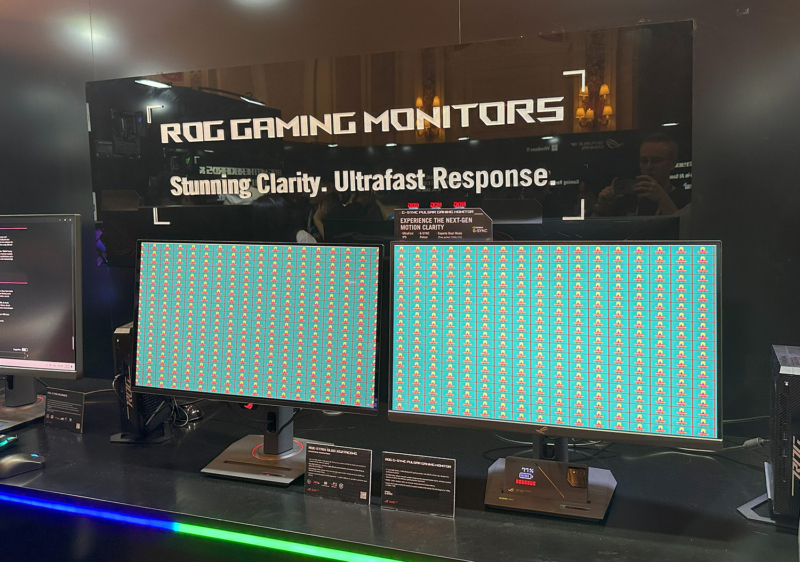
Also being showcased was their 27” G-sync Pulsar IPS monitor which was originally being referred to as the ROG Swift PG27AQNR, but we were told the model naming convention was still being finalised which is why no name is mentioned on the spec card. This screen has a 1440p resolution and a 360Hz refresh rate. This is an LCD screen aimed at professional gamers who want amazing motion clarity for gaming.
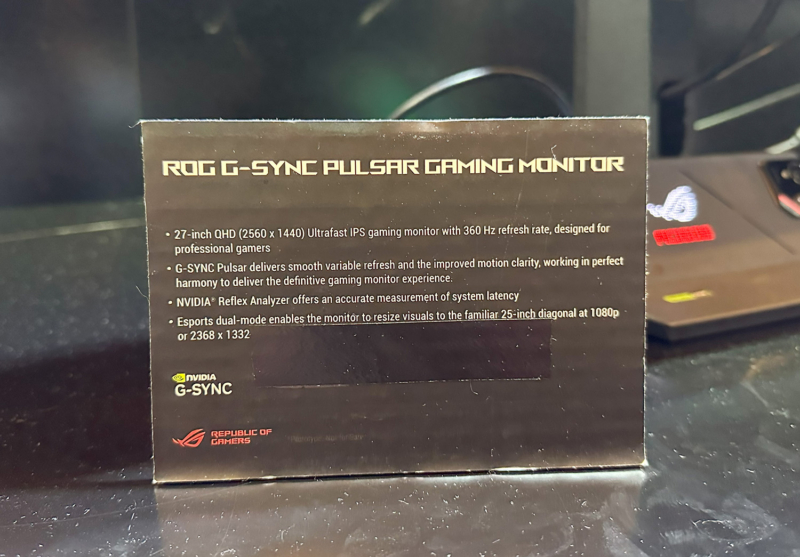
What makes this special is that it will allow you to use a strobing blur reduction backlight at the same time as G-sync variable refresh rates, and it’s been co-developed and designed with NVIDIA directly so you know it’s going to offer top-tier performance. It’s an evolution basically of their PG27AQN monitor which featured NVIDIA Ultra Low Motion blur 2, but you could only use that at a fixed refresh rate. Here, G-sync Pulsar allows you to use it at the same time as G-sync VRR. For more information on how G-sync Pulsar works, check out this news piece.
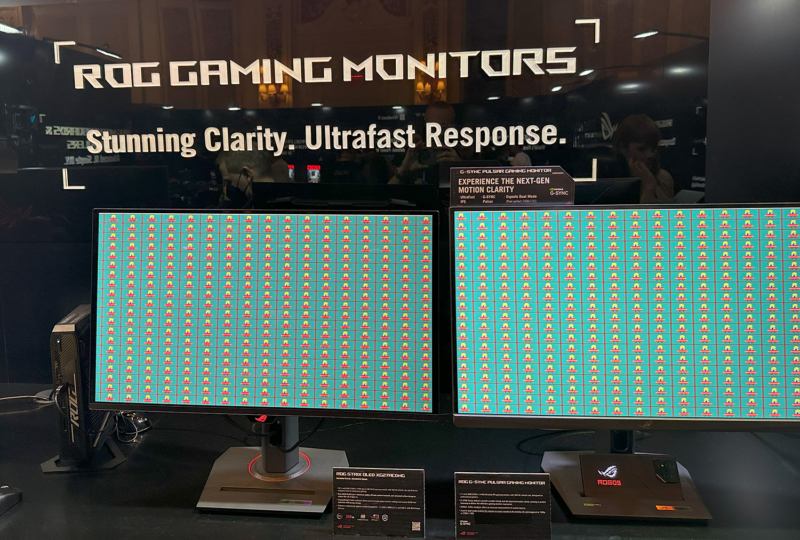
The screen was set up side by side with a 360Hz QD-OLED monitor (the ROG Strix XG27ACDNG), and although it’s not really very easy to capture on film or in photos like this at the event, in person you could definitely see how much clearer motion was with G-sync Pulsar enabled – and that’s compared to a very fast OLED panel. It delivers the motion clarity equivalent to a hypothetical 1440Hz monitor in fact! Not everyone is going to need this of course, and OLED monitors clearly have advantages in other areas like HDR performance and contrast, but this G-sync Pulsar monitor is aimed at professional gamers and esports players primarily.

This model also uses the new MediaTek G-sync scaler as opposed to the older Native G-sync modules, which offers NVIDIA features like G-sync VRR, variable overdrive, super low input lag, this new G-sync Pulsar technology and also Reflex Latency Analyzer – and that’s all without sacrificing on modern connectivity options or adding significantly to the production and retail costs. That’s the future of NVIDIA G-sync and we hope to see it included on more monitors moving forwards.
We saw this screen first of all at Gamescom in August 2024 where it was in a prototype stage and didn’t even have a working on screen menu, but Asus tell us it has been finalised now and should be released before the end of Q1.
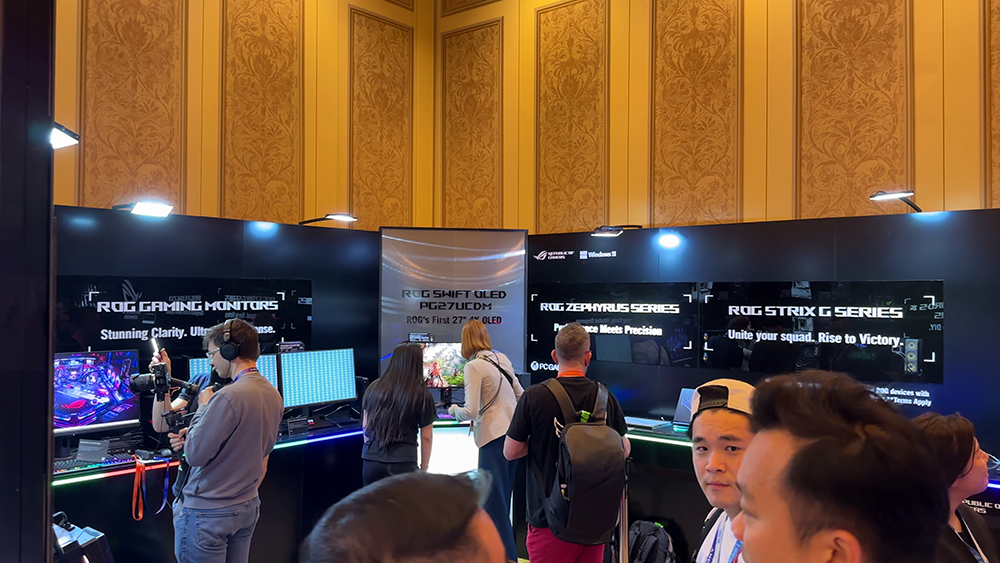
Dual-mode Refresh Rate LCD Options are Growing
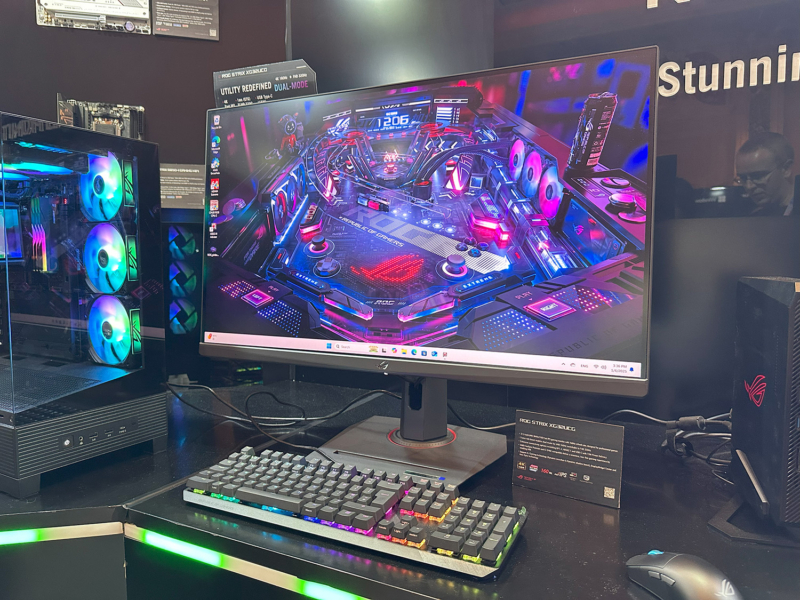
Next up was the new ROG Strix XG32UCG, a 31.5” sized LCD screen with dual-mode support. This one is built around a Fast IPS LCD panel and has a native 3840 x 2160 4K resolution and a 160Hz refresh rate, or you can select to use the dual mode function which will drop your resolution to 1080p, but double your refresh rate to 320Hz. So you can choose if you want to prioritise image detail and resolution, or prioritise frame rates and speed depending on the type of game you’re playing.
We’ve seen a couple of dual mode OLED monitors so far, including Asus’s ROG Swift PG32UCDP 32″ OLED monitor which was also on display at CES and that we reviewed last year, but this is now being added to gaming LCD screens as well which is nice to see. It’s easy to operate from the on screen menu or via a quick access button and the screen just switches over for you.
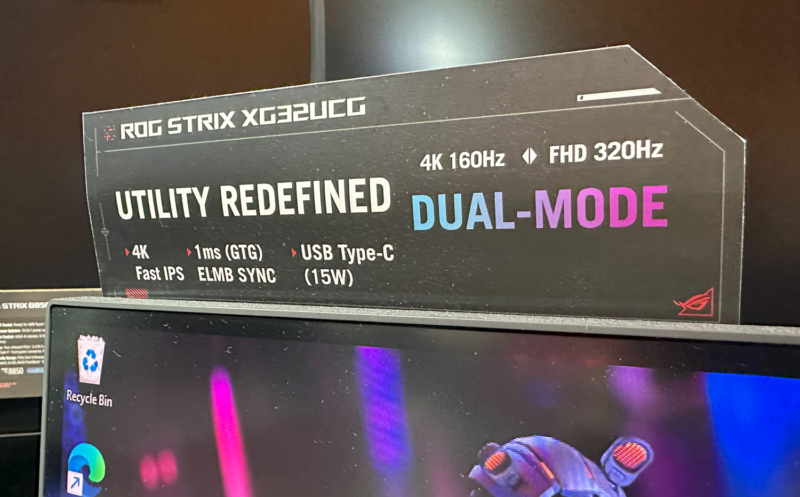

This screen supports NVIDIA G-sync and AMD FreeSync VRR and also supports Asus’s ELMB-sync technology which allows you to use a blur reduction mode at the same time as VRR. That won’t be quite as premium and advanced in performance as the NVIDIA G-sync Pulsar solution discussed above, but it’s a great feature for gamers still. Further information can be found in our news piece here.
ProArt Professional Monitors Push Higher and Higher Resolutions
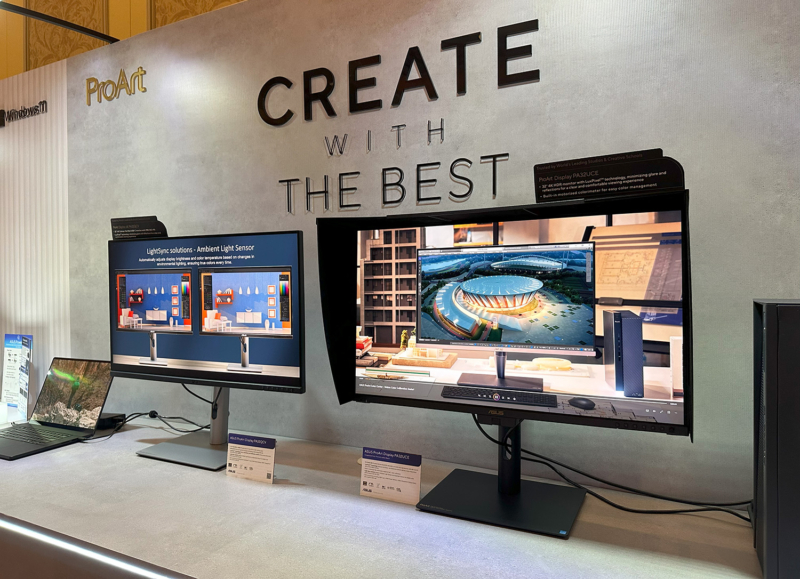
Away from the ROG gaming line-up we also had chance to see a couple of their latest ProArt series monitors at the event, aimed at professional users with a range of high end features and specs.
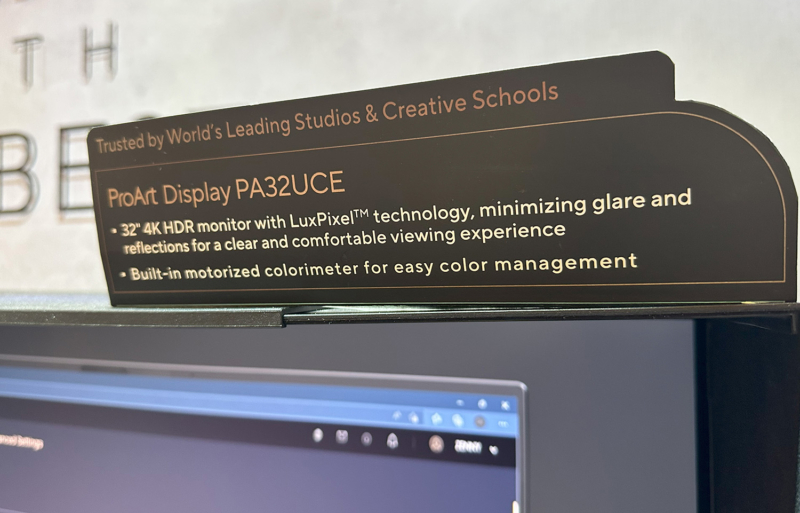
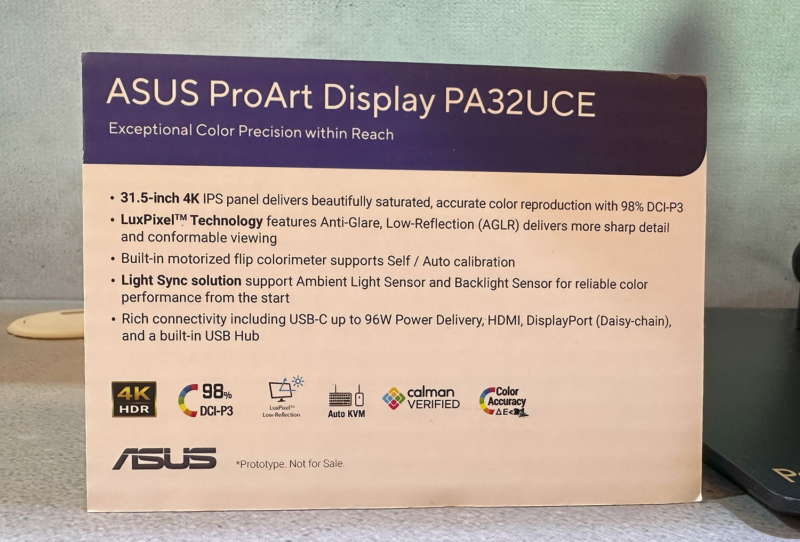
The ProArt PA32UCE has a 31.5” IPS panel with a 3840 x 2160 “4K” resolution. It has a wide colour gamut with 98% DCI-P3 coverage and includes USB type-C connectivity with 96W power delivery.
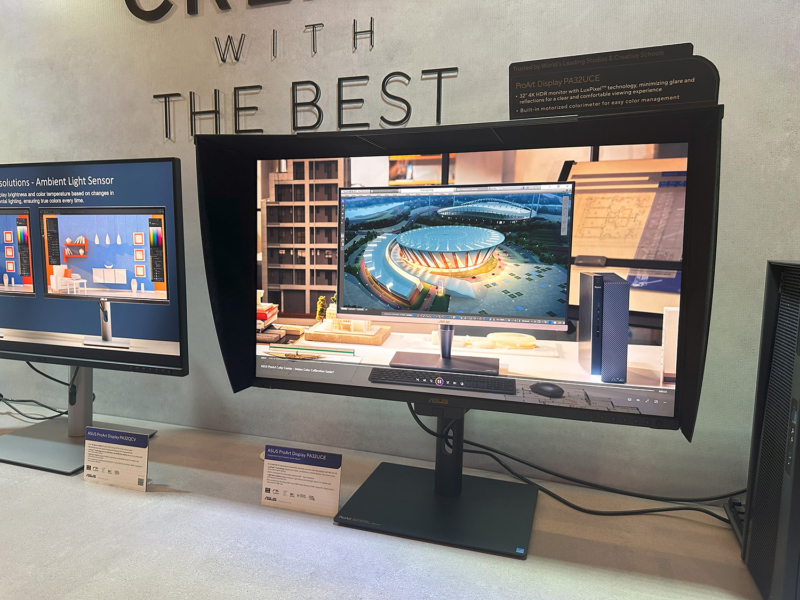
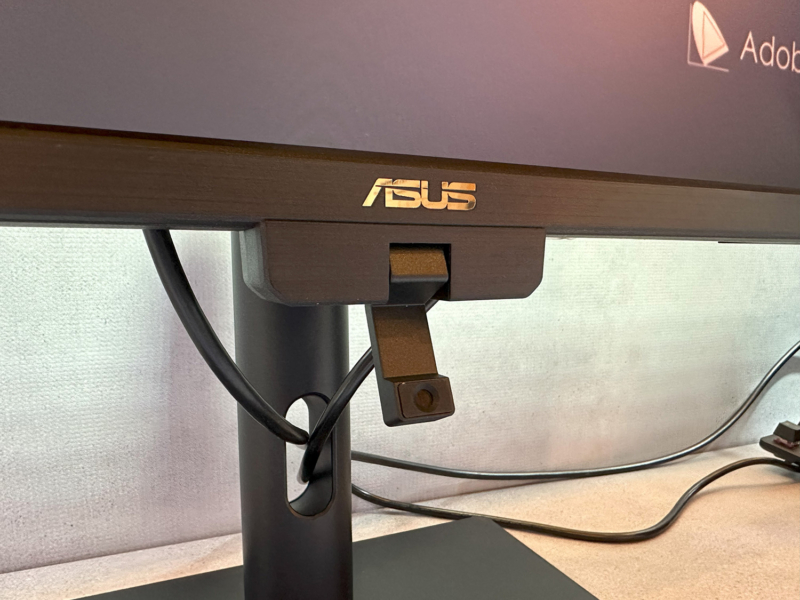
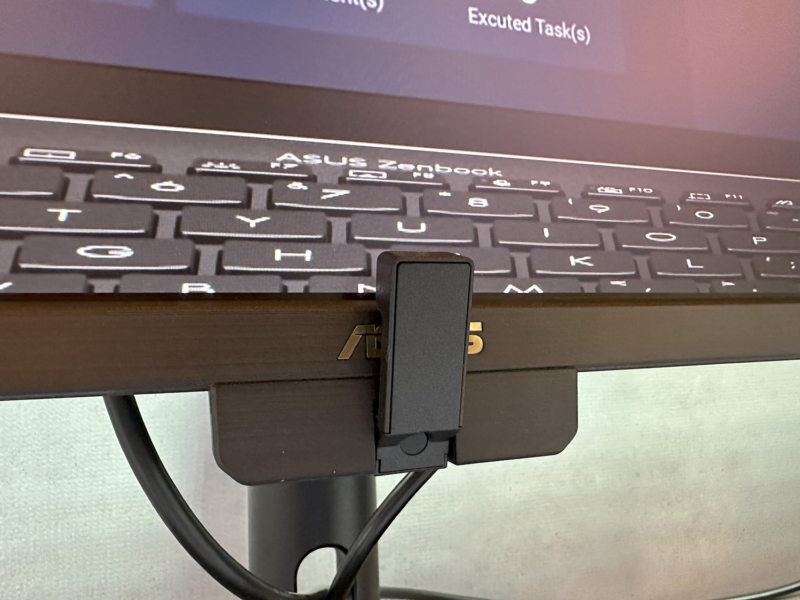
It’s Calman Verified for colour accuracy with a delta E less than 1, and also supports hardware level calibration including a built in motorized colorimeter which flips up from the bottom and can be used to automatically calibrate the screen for you at set times.
You can find more info about the ProArt PA32UCE in our news piece here (scroll down, it’s covered within that same news piece with the PG32QCV discussed below).
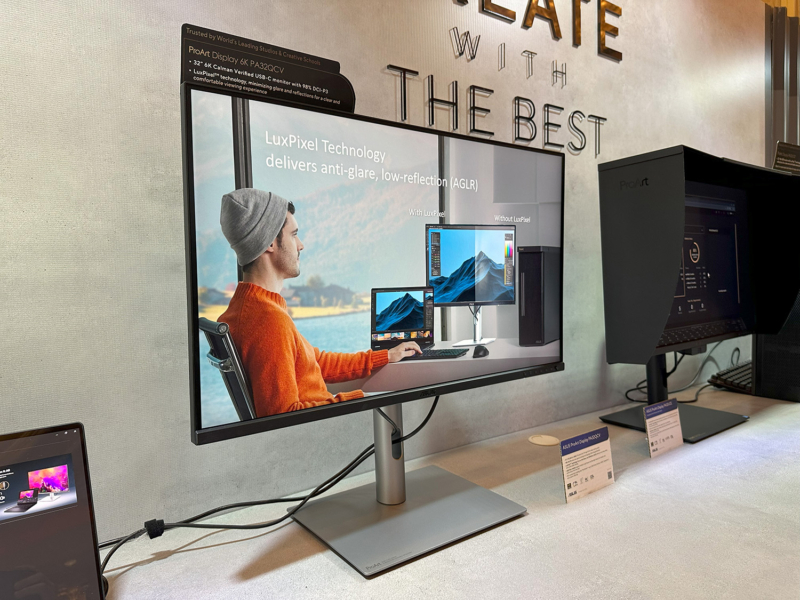
The other model on show was the ProArt PA32QCV which is also 31.5” in size but has an even higher 6016 x 3384 “6K” resolution. This is also built around an IPS panel but offers a super high 218 PPI pixel density for amazing image clarity, detail and sharpness.
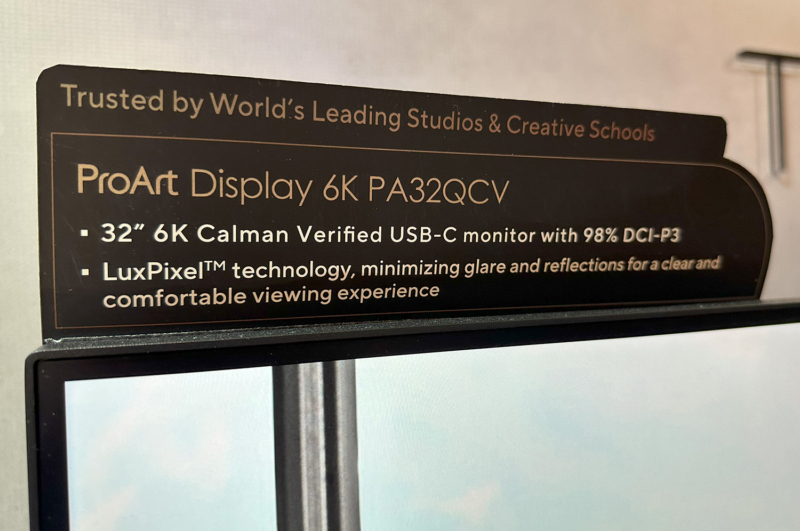
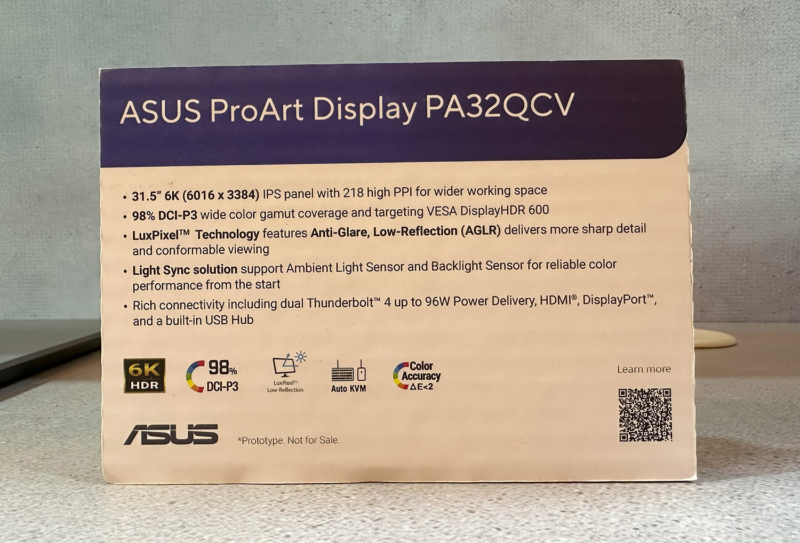
This 6K model features dual Thunderbolt 4 connections with 96W power delivery and so is well suited to Mac users as well, but it doesn’t have the built in motorized colorimeter that the 4K model we’ve just discussed has.
You can find more info about the ProArt PA32QCV in our news piece here.

Not actually shown at the event, but worth discussing is the ProArt PA32KCX which was announced back in April 2024 but has more finalised specs now for CES. This is a slightly larger 32” sized screen with an IPS panel, but has a massive 7680 x 4320 “8K” resolution, for a super high 275 PPI pixel density.

This model also has a 4096-zone Mini LED backlight for HDR content creation and consumption, including a 1200 nits peak brightness. Like the 4K model we just discussed, this model has a built in motorized colorimeter.
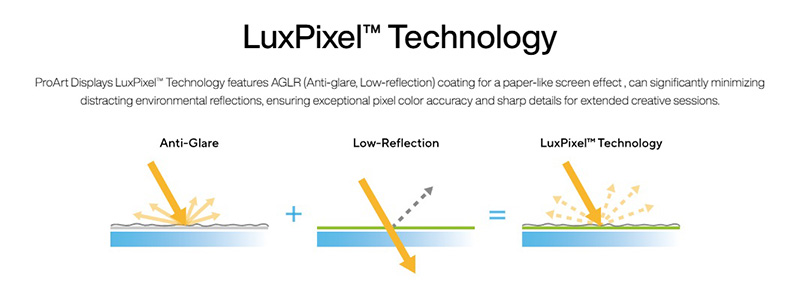
All these new ProArt models feature Asus’ LuxPixel technology which offers an anti glare and low reflection coating, similar in appearance visually to the matte AG coating we’ve seen Samsung add to their OLED monitors in recent times. It provides a clear and clean image, and excellent glare and reflection handling. Their Light sync technology also includes an ambient light sensor for controlling the screen brightness depending on your viewing environment, and a Backlight Sensor which helps provide reliable colours from the start, even during screen warm up periods.
You can find more details about the ProArt PA32KCX in our news piece here.
That’s a Wrap for Asus’ Booth at CES 2025
So there you go, there’s a run-down of all the new monitors on show from Asus at CES this year. You can find more information on our website for all of these screens with loads more information and specs if you want to know more. We’ve linked throughout this article but you can also use the search box if needed. We also have coverage in the following video so if you want to see some footage of these screens and hear more about them that way, check it out here.
We may earn a commission if you purchase from our affiliate links in this article- TFTCentral is a participant in the Amazon Services LLC Associates Programme, an affiliate advertising programme designed to provide a means for sites to earn advertising fees by advertising and linking to Amazon.com, Amazon.co.uk, Amazon.de, Amazon.ca and other Amazon stores worldwide. We also participate in a similar scheme for Overclockers.co.uk, Newegg, Bestbuy and some manufacturers.
Stay Up To Date
Please give us a quick subscribe on our growing YouTube channel to help support us, and to stay up to date on new content there!
 |
 |
 |
 |
| Browser Alerts | Follow us on X (Twitter) | Subscribe | Support Us |
Popular Trending Articles

